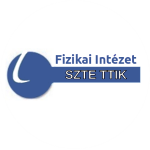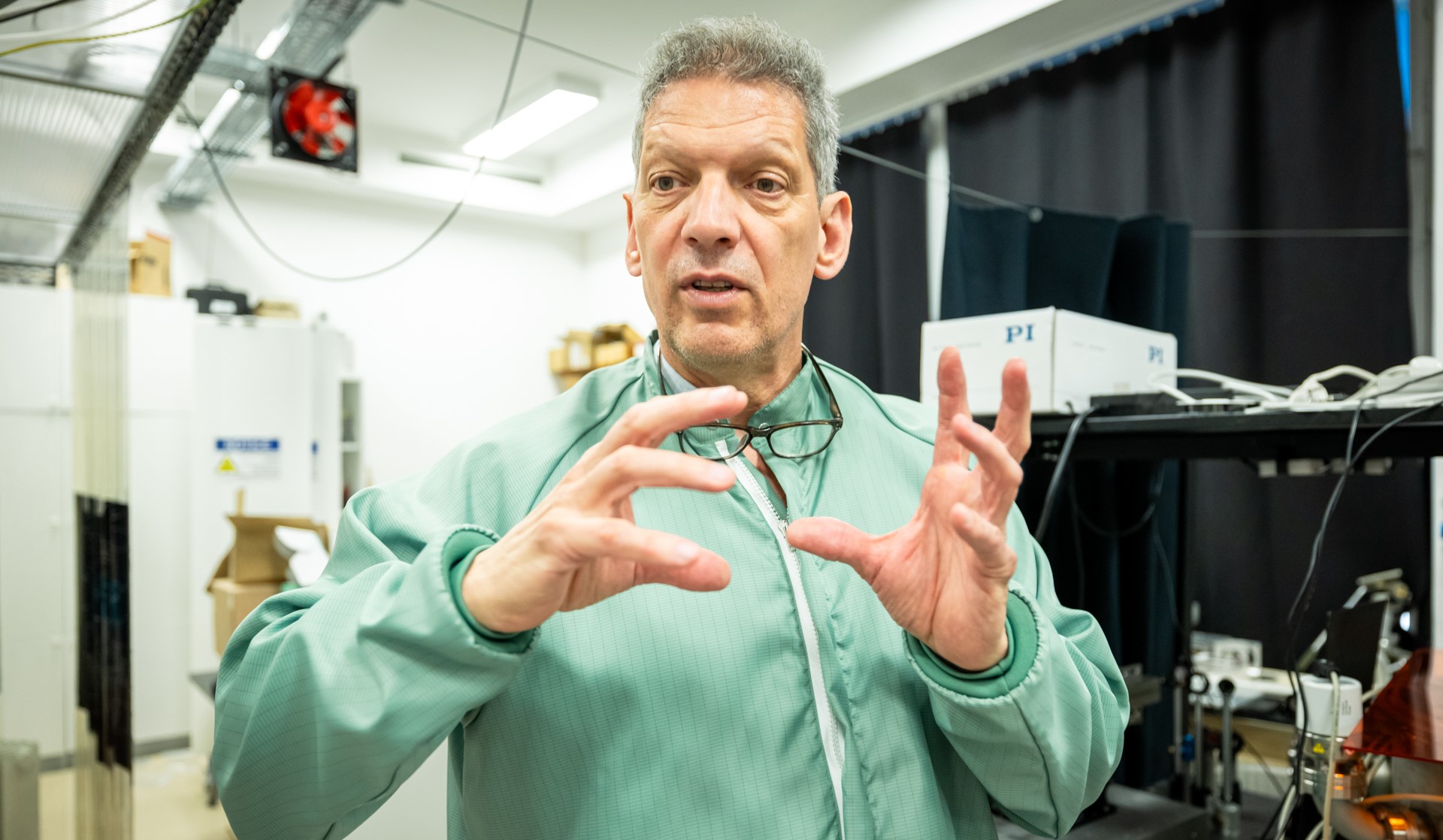
Research, R&D
Advanced Optical Imaging Group
The Advanced Optical Imaging (Adoptim) Group focuses on super-resolution localization microscopy, its theory, modelling, experimental development and application. In addition to quantitative evaluation of <20 nm spatial resolution fluorescence images available in biological samples, comparative/control measurements are performed in confocal FLIM, FCS, FA, DIC and phase contrast imaging modes. The Adoptim group’s field of expertise also includes optical beam engineering and tomographic reconstruction imaging mainly related to application areas such as microscopy and optical microlitography.
Astrophysics Research Group
The Astrophysics Research Group has been intensively studying supernova (SN) explosions and binary/multiple stellar systems since. The group consists of researchers working at the Institute of Physics and at the Baja Astrophysical Observatory of our University. In the last decade, the group has earned several research grants, which have allowed them to significantly develop the local (Hungarian) observational and computational facilities. Main topics:
• astrophysics of supernova explosions and of late-time stellar evolution processes;
• interactions and dust formation in the environments of SN explosions;
• studying exotic galactic and extragalactic transient phenomena;
• eclipsing binaries in dynamically interacting close, multiple systems.
Members of the group are involved in both small- and large-scale international collaborations, which allow them to take part in various research projects together with leading national and foreign researchers/institutes of the field (e.g. STScI, Berkeley, CalTech, MIT, U. of Texas at Austin, U. of Arizona - USA; ESO Garching - Germany; U. of Ghent - Belgium; Astronomical Institute of the Czech Academy of Sciences). Due to their extended collaboration network, they have access to the data of the highest-quality telescopes, including the 8-10m class HET, Keck, VLT and Gemini Telescopes on the ground, as well as Hubble and James Webb space telescopes; moreover, they have experience on the effective usage of archived space telescope data (e.g. of Swift, Spitzer, or TESS). They combine this unique observational dataset with a strong theoretical background applying various modeling methods.
Cardiopulmonary Research Group
The Cardiopulmonary Research Group carries out scientific activities of a biophysical nature in the field of respiration and circulation. Their research spans the study of biophysical phenomena related to the respiratory system and the closely interacting circulatory system, from animal models to human clinical studies. Their work is related to the development and validation of innovative ventilation modalities and the development of patient monitoring related to respiration and circulation. The main research topics cover the following:
• Characterization of respiratory mechanics and lung function in animal models of respiratory disorders;
• Studying the biophysics of gas exchange by capnography measurement of ventilation/perfusion;
• Mapping of lung-related lesions affecting multiple organ systems
• Development and validation of new mechanical ventilation modalities in animal models and clinical studies
• Exploring the life science implications of artificial intelligence and 3D printing
• Development of a portable, low-cost respiratory system measuring device
Their research activity is performed in collaborations with local and international institutions, such as SZTE Medical School, Department of Anaesthesiology and Intensive Care, SZTE 3D Centre, University of Geneva, Geneva, Switzerland, Grenoble University Hospital, Grenoble, France, University Paris Saclay, Paris, France
The main research projects of the Research Group in Gravitation include the following:
• Exact solutions and solution generating techniques in general relativity
• Exact solutions, perturbations and stability in scalar-tensor gravity
• Mathematical description, evolution, black hole, black string and cosmological solutions in brane worlds
• Astrophysical environment of black holes: accretion disk, magnetic field and jets
• Gravitational lensing features in modified gravity theories
• Dark matter and dark energy models confronted with observations
• Postnewtonian dynamics of compact binaries: orbital and spin evolution, spin-flip and spin flip-flop effects, stability
• Gravitational waveforms, gravitational wave backreaction on the orbits to high orders, detection
• Classical description and quantization of constrained dynamical systems
• Black hole thermodynamics
The group members participate in the following collaboration networks:
• Laser Interferometer Gravitational-wave Observatory (LIGO)
• Laser Interferometer Space Antenna (LISA)
• Einstein Telescope (ET)
• Addressing observational tensions in cosmology with systematics and fundamental physics (CosmoVerse)
• Bridging high and low energies in search of quantum gravity (BridgeQG)
They also have ongoing collaborations with researchers from
• HUN-REN Wigner Research Centre for Physics, Budapest, Hungary
• Babes-Bolyai University, Cluj-Napoca, Romania
• Max Planck Institute for Radioastronomy, Bonn, Germany
• Ruhr-Universität Bochum, Bochum, Germany
• Swansea University, Swansea, United Kingdom
• University College London, London, United Kingdom
• Institute of Cosmology & Gravitation, University of Portsmouth, Portsmouth, United Kingdom
• Utrecht University, Utrecht, Netherlands
• Nikhef, Amsterdam, Netherlands
• University of Alabama, Tuscaloosa, AL, United States
• University of Calgary, AB, Canada
• National Institute of Technology, Kozhikode, Kerala, India
The research of the Group for Nanoplasmonics is focused on design, characterization, fabrication and application of plasmonic structures. They employ a variety of theoretical methods to perform plasmonic spectral engineering and to control light confinement by optimizing parallel the geometry and the illumination condition of plasmonic structures. This plasmonic-cavity-configuration optimization scenario is applied to attain plasmon enhanced nanophotonical phenomena. They are developing novel lithography technologies for fabrication of complex plasmonic structures comprising wavelength-scaled arrays of nano-objects over large surface areas at low costs. In addition to theoretical studies, they also realize angle- and wavelength-interrogation of the plasmonic structures characteristics. The optimized plasmonic-nanocavity-configurations are applied to improve performance of nano-devices in optical communication systems (e.g. single-photon detectors) and in lab-on-chip biosensing platforms (e.g. specific biodetection). Their research topics include the following:
• Design of nanolasers
• Design of metamaterials for resonant enhancement and coherent perfect absorption
• Design of metamaterials for information readout and cloaking
• Plasmonic response to short-pulse illumination
• Four-dimensional control of plasmonic interactions with short-pulse illumination
High Intensity Laser Research Group
The "High Intensity Research Group" of the USz Institute of Physics and the High Intensity Laser Laboratory (HILL), where the research is carried out, was founded by Sándor Szatmári in 1994. In HILL two (self-constructed) high-power, KrF laser systems are operated which produce 600 fs pulses of 100 mJ energy. The beam can be focused to a very small spot obtaining intensities up to 1018 W/cm2. By integrating the recently introduced, Nonlinear Fourier-filter (NFF) into the system the temporal contrast of the output pulse is raised to 1012. These systems have the best laser parameters at 248 nm in Europe. This KrF laser is ideal for experiments where short wavelength pump pulses of very high spatial and temporal quality are needed. The HILL laboratory is operated as a user’s facility providing not only fs light sources of unique parameters but also target areas for high-intensity laser-matter interaction and material’s processing together with the corresponding detection and measurement systems. The laboratory is a member of the Laserlab-Europe research network since 2009. The research activities are supported by OTKA funds and different R&D contracts. The main field of the research and development is the generation of intense, short (XUV, X-ray) wavelength radiation, the increase the energy and the temporal and spatial contrast of the high-brightness laser pulses. The investigation of high intensity laser-plasma interactions with KrF lasers is performed in cooperation with the Wigner Research Centre for Physics, the research and development of soft X-ray lasers is done jointly with the Institute of Physics, University of Pécs. The main research projects are:
• improvement of the temporal contrast of short-pulse excimer and solid-state laser systems,
• research and development of table-top soft X-ray lasers,
• research and development activities targeting the increase of the brightness of short-pulse KrF excimer laser systems,
• investigation of high intensity laser-plasma interactions with KrF lasers.
Integrable Systems
Exactly solvable (“integrable”) models play important role in almost all branches of physics. Behind solvability there usually lurks a corresponding symmetry, which also underlies the mathematical beauty of these systems. The current research of László Fehér is mainly focused on integrable many-body models describing an arbitrary number of particles moving in one dimension. These models appear in several fields of physics and possess close ties to interesting areas of mathematics. Details can be gleaned from our recent publications.
Light-matter Interaction Theory (LIMIT)
The main focus of the Light-matter Interaction Theory group is the theoretical description of light-matter interaction. In this context, “light” is either classical electromagnetic radiation, or a quantized field (containing an integer number of photons), while “matter” ranges from atomic-molecular systems to bulk solid states. Besides fundamental research, they are open for the interpretation of specific experiments as well. They are also interested in applications that are related to quantum computation. One of their main research projects is related to the quantum optical description of optical high order harmonic generation (HHG). This is a highly nonlinear process, in which a strong laser pulse creates orders of magnitude weaker secondary radiation with frequencies that are integer multiples of the central frequency of the exciting field. In this context they investigate the quantized description of the HH modes (photon picture). They are also interested in calculating the light-induced currents in bulk and nanoscale solid state samples. This is important from the viewpoint of pulse characterization, but can also be used for the design of light-controlled, ultrafast switches. They collaborate with both theoretical and experimental groups in the ELI-ALPS, and the Wigner RCP.
Light-matter Interaction Research Group
The Light-Matter Interaction Research Group focuses on the investigation of laser-induced processes and the development of laser-based technologies for material manipulation and analysis. Their work covers a wide range of applications, from laser ablation to nanoparticle generation. Key research areas include:
• Time-resolved studies of laser-induced processes
Using a pump-probe setup with nanosecond temporal resolution, the group investigates phenomena such as shockwave formation, acoustic pulses, and material ejection during laser ablation.
• Laser-based material processing
The group employs various laser types (excimer, Nd, CO₂, dye lasers) for the precise machining of materials, including polymers, biological tissues, and transparent materials. Applications include photochemical processes and thin-film deposition.
• Laser synthesis of nanoparticles and nanostructures
The group focuses on producing nanoparticles from metals using laser ablation techniques. Their research includes controlling nanoparticle shape and size and investigating nanostructures that reduce reflectivity in the UV, visible, and near-IR ranges.
• Laser fragmentation of pharmaceutical compounds
Research aims to improve the solubility and bioavailability of poorly soluble drugs through laser-induced particle size reduction. The group studies laser ablation of pharmaceutical compounds in liquid and air environments.
• Measurement of tissue perfusion using laser speckle contrast analysis
The group has developed a mobile system to measure real-time blood flow changes in tissues using laser speckle contrast analysis (LASCA). Their research focuses on improving measurement accuracy by minimizing interference from static particles.
Molecular Biophysics and Biomaterials Group
The Molecular Biophysics and Biomaterials Group uses optical (non-invasive) methods to examine intact cells in their natural environment, with which they determine their photosynthetic capacity and physiological state under the most diverse conditions (light intensity, temperature, oxygen content, etc.).
They also examine proteins (mainly photosynthetic reaction center proteins) in artificial environments and immobilised in bio-nanocomposite materials using spectroscopic and electrochemical methods.
The interaction of different biomolecules on a titanium implant surface is investigated using simulation methods. From a medical point of view, many peptides and proteins play an important role during ossification. Their goal is to study the adhesion of these molecules using molecular dynamics methods, taking into account the aqueous environment.
They also use image processing and modeling procedures based on artificial intelligence to solve biophysical and medical physics problems.
Nano- and Microprocessing Laboratory (Namilab)
The research group proudly stems from the Laser Microfabrication Laboratory (LAMILAB), founded by Prof. Tamás Szörényi before the turn of the millennium. This is well reflected in the fact that laser induced materials processing, especially microprocessing is still one of their actively studied fields. In recent years the group’s research interest is more and more driven by nanoscience and nanotechonolgy, i.e. the generation, study and application of various materials structures at the nanometer scale. They are interested in the nano- and microstructuring of various materials systems, along with the investigation and development of techniques that are able to generate nanoparticles, nanostructures, and patterns in the nano- and/or micrometer size range. They are aiming at understanding the fundamental mechanisms behind the structural changes and in this sense they are always doing basic science. However, at the same time their research portfolio is strongly application oriented, since the technologies and materials systems they focus on always have industrial relevance. The research interest of the group is quite broad. In all of their projects the fundamental understanding of various light-matter and electron-matter interactions are going hand in hand with our application-oriented approach. Their projects are centered around three main topics:
• Fabrication, investigation and application of nanostructures
• Laser materials processing
• Additive manufacturing (3D printing)
Photoacoustic Research Group
The Photoacoustic Research Group focuses on the development and application of instruments based on photoacoustic principles for various environmental and industrial measurements. Their work leverages the high sensitivity, selectivity, wide measurement range, and rapid response time of the photoacoustic method. Key research areas include:
• Development of instruments to measure vehicle emissions
Instruments for measuring harmful emissions from internal combustion engine vehicles, applicable on test benches, roller brake testers, and in-vehicle testing on tracks. Measured pollutants include NO, NO₂, N₂O, NH₃, CO, CO₂, and soot particles.
• Drone-mounted photoacoustic systems for air quality monitoring
Development of small, lightweight photoacoustic systems for continuous air pollution monitoring using drones. Applications include early detection of forest fires and tracking the spread of pollutants.
• Aerosol laboratory for the analysis of atmospheric particles
Operation of a state-of-the-art aerosol laboratory (LAKLab) for the quantitative and qualitative analysis of atmospheric aerosols. Research includes the study of atmospheric soot, emission-based fuel development, and the effects of aerosols on air quality, climate, and health.
• Development of systems for testing the permeability of face masks
Using advanced instruments, the group investigates the permeability of surgical and medical masks to nano-aerosols under real breathing conditions, aiming to support the development of highly efficient surgical masks. They also assess the risk of virus transmission during aerosol-generating medical procedures.
Quantum physics in strong laser fields, modelling and numerical simulation group
In strong laser fields, small atomic systems (atoms or small molecules) exhibit a wide range of exciting phenomena (e.g. attosecond pulses), which are at the center of state-of-the-art experimental and theoretical research at leading institutes around the world (e.g. ELI-ALPS, University of Szeged). Based on the exact solution of Schrödinger's equation, they are particularly interested in the fundamental quantum properties of these processes, e.g. tunneling effect, quantum entanglement and measurement problems.
They also support experimental research groups in modelling and simulation of problems in different areas of physics (fluid dynamics, acoustics, rheology, etc.).
Statistical physics group
The group uses modern theoretical methods of statistical physics and numerical, computational methods to study the collective behavior of various many-body systems. Applications include the theory of critical phenomena and phase transitions, the study of properties of quantum and disordered systems, the study of non-equilibrium and far-from-equilibrium problems, and biological applications. The group also explores interdisciplinary applications of statistical physics, such as the study of complex networks, modelling of epidemic propagation and the study of problems in economic physics.
TeWaTi Research Group
The TeWaTi Research Group was established in 1997 at the Department of Optics and Quantum Electronics, University of Szeged. The main research and development activities of the group are related to generation, investigation and applications of high intensity, ultrashort laser pulses. Since TeWaTi laboratory was pioneering intense ultrafast lasers in Hungary; it has been the most important national scientific, training and cooperation base of ELI-ALPS since its preparation phase.
The Research Group operates two laser laboratories, namely TeWaTi, the high intensity femtosecond laser research laboratory and hELIos laboratory, which focuses on education. Both laboratories are hosting several Hungarian and international cooperation. Main scientific directions are related to laser research and laser diagnostics development activities, while collaborative experimental applications also include time resolved ultrafast spectroscopy, laser surface processing and high harmonic generation. In the frame of one of the current major project, they design and develop high repetition rate target systems for the National Laser-Initiated Transmutation Laboratory, that aims to generate fast neutrons with few cycle lasers at ELI-ALPS. The other major project is the research and development of a laser-based X-ray source for CT imaging of industrial objects, supported by the Cooperative Technologies National Laboratory.
In addition to research activities, they are also contributing to the professional training of developers and scientific users of laser technology.




